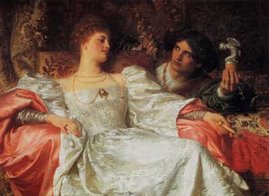On Friday, I was shocked to learn of the
violation of the Duchess's privacy. Yes, Duchess Catherine is a member of the royal family, and yes, she is in an incredibly privileged position. However, every human being deserves privacy during intimate moments, and the photographer's actions were a gross violation of the duke and duchess's private space. I have always admired the Duchess's grace and dignity, especially in a world dominated by crass and glitzy media figures such as Kim Kardashian and Paris Hilton, and like much of the world, was thrilled to watch her fairy tale wedding last year (it seemed like something out of a Regency novel). She and her prince conduct their lives with decorum, and the actions of the magazines in France, Italy, and Ireland, where the photos are now published, are inexcusable.
The French editor's protest that "the photos are not in the least shocking" seems weak, and even more offensive is the
Irish Daily Star's editor's comments: "The duchess would be no different to any other celeb pics we would get in, for example Rihanna or Lady Gaga."Actually, sir, she is different. Rihanna and Lady Gaga crave the media spotlight and deliberately wear provocative outfits to titillate their audiences. Duchess Catherine, in great contrast, works hard to maintain some measure of privacy as she enjoys newlywed life, and her outfits reflect a tasteful and conservative style. Moreover, she was staying in a private residence when the photos were taken; how many of us would appreciate having cameras spying on us if we were vacationing with our families in a secluded location? Now, if she and the prince were frolicking on one of the public beaches in France, that would be an entirely different matter, but they were taking a break from the media frenzy usually surrounding them and enjoying a private time between husband and wife, and the photographer deliberately invaded that privacy.
I just saw the Chi editor's comments, and I am amazed at the ignorance expressed in his statement: ""
Chi pays attention to respecting people's dignity. I don't think they hurt Kate's image." Oh, really? If it were your wife or mother or daughter being displayed on the pages of your magazine, you would still think their dignity is intact? Especially if the photos were taken without those women's consent? And that is the most disturbing element to me: these photos feel like a violation of not only privacy but also of the duchess's body.
I dislike dwelling on such a distasteful topic, so I'm ending this post with a picture of happier times. I hope the Duke and Duchess of Cambridge find some comfort in their happy memories of their wedding and of their life together.
.jpg)























